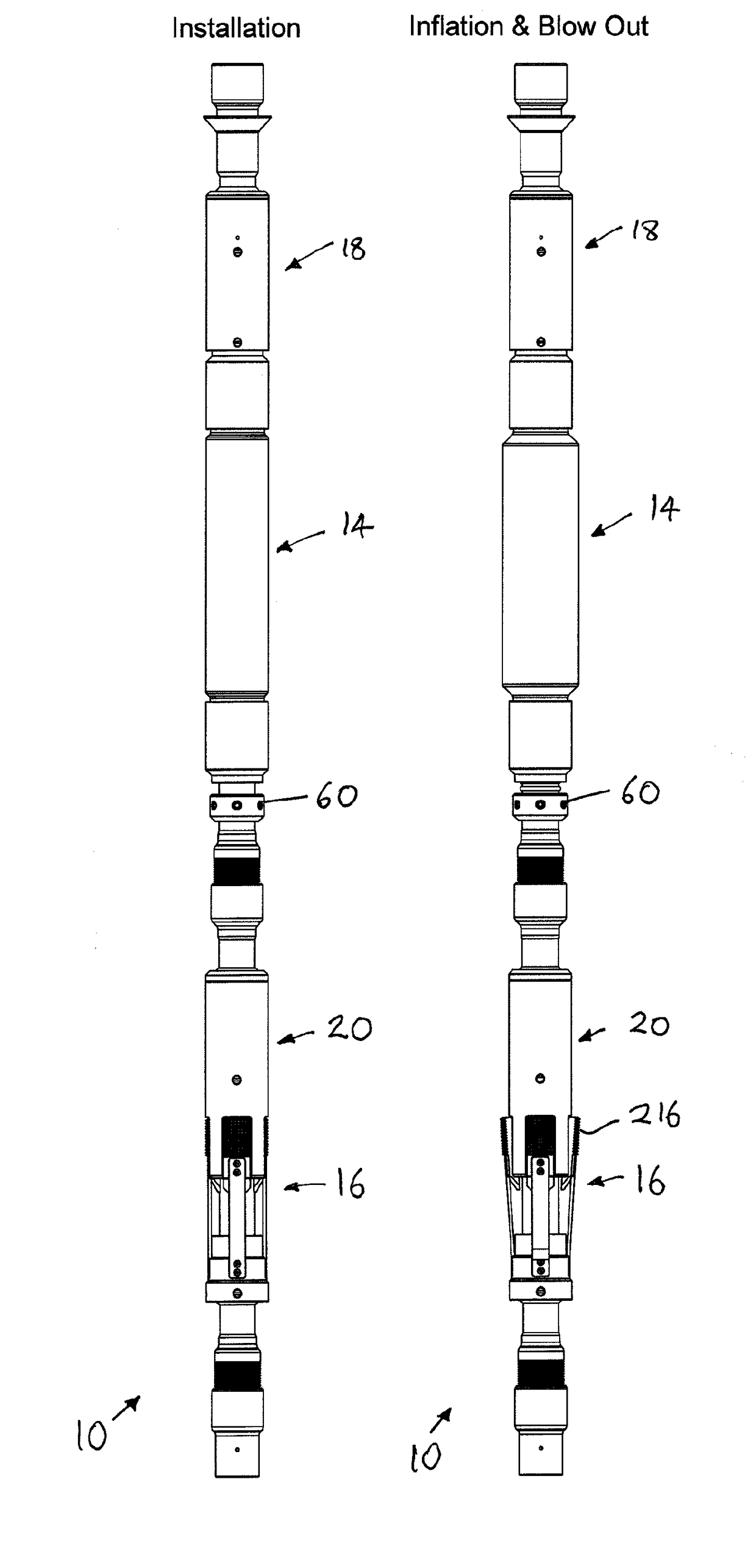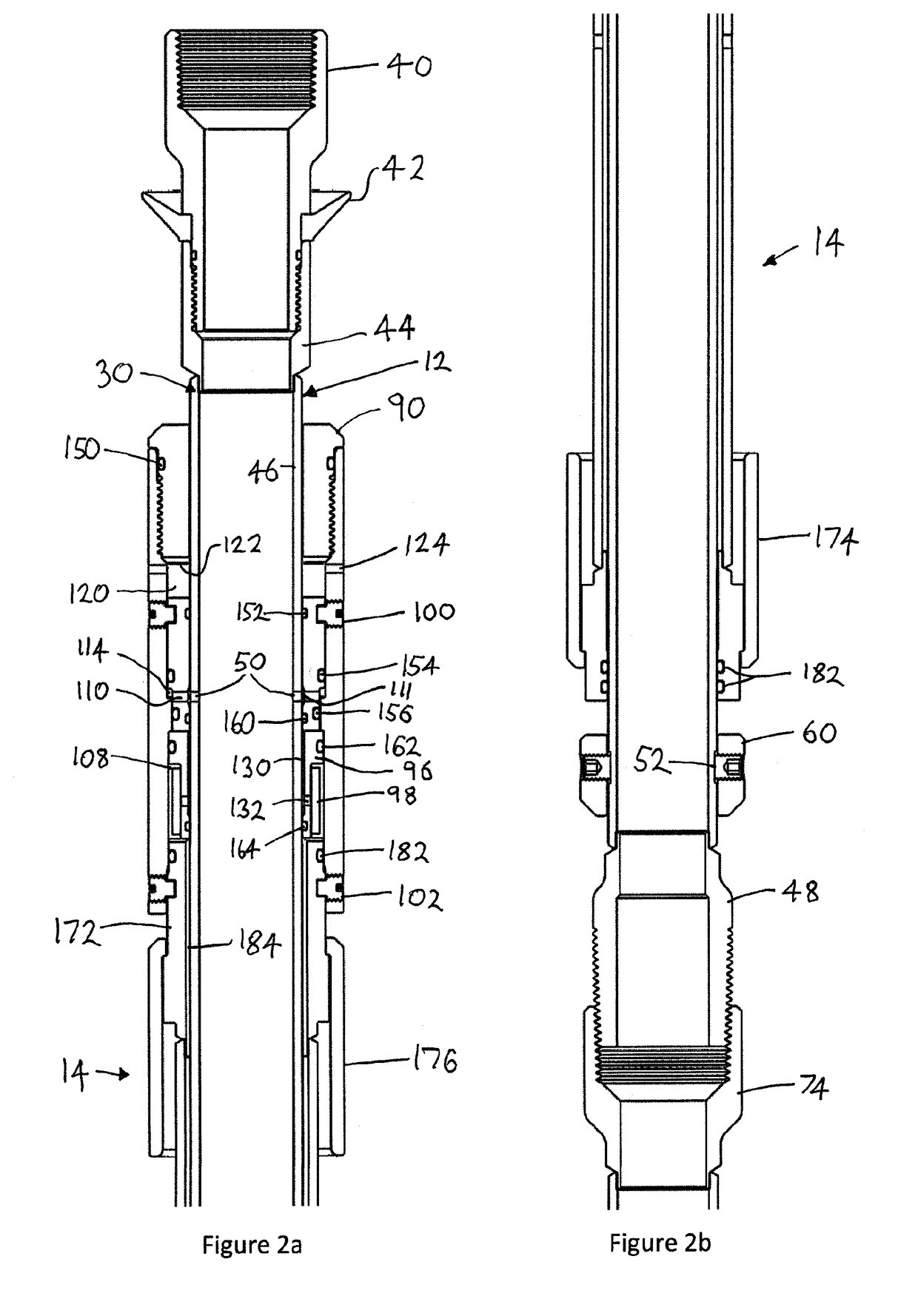Hydraulic anchoring assembly for insertable progressing cavity pump
a technology of progressing cavity pump and hydraulic anchoring assembly, which is applied in the direction of fluid removal, borehole/well accessories, construction, etc., can solve the problems of psn not being retrofitted to existing wells, affecting the sealing ability of psn, and large cost for well operators
- Summary
- Abstract
- Description
- Claims
- Application Information
AI Technical Summary
Benefits of technology
Problems solved by technology
Method used
Image
Examples
first embodiment
[0092]As shown in FIG. 1 the hydraulic anchoring assembly 10 of the present invention comprises an inner mandrel 12, an inflatable packer 14 and a hydraulic slip 16 both set upon the inner mandrel, a one-way valve 18 in fluidic communication with the inflatable packer 14, a one-way deployment valve 20 in fluidic communication with the hydraulic slip 16, a sealing means 22, and a release means 24 for deflating the inflatable packer 14 and releasing the hydraulic slip 16. The hydraulic anchoring assembly 10 is intended for deployment with an I-PCP in a well (not shown) for pumping well fluids out of the well to the surface of the well.
[0093]The I-PCP has a rotor and a stator (not shown). The rotor is attached to and driven by sucker rods (not shown) and the stator is attached to the inner mandrel 12 at the upstream end of the hydraulic anchoring assembly 10. Prior to deployment the stator the I-PCP is attached to the inner mandrel 12 of the hydraulic anchoring assembly 10 and the pair...
second embodiment
[0147]The main differences between the second embodiment 10a and the first embodiment 10 is that there are two or more cups seals 42 and two or more inflatable packers 14 and 14a. The reason for the second cup seal 42 is to improve the pressure differential experienced by the upstream inflatable packer 14 to improve its chances of inflating. The reason for the second inflatable packer 14a (located downstream of the first inflatable packer 14) is to guarantee a seal between an I-PCP (not shown) and production tubing is achieved even where the upstream inflatable packer 14 does not achieve full inflation.
[0148]As shown in FIGS. 7a to 7c the hydraulic anchoring assembly 10a of the present embodiment comprises an inner mandrel 12, an upstream inflatable packer 14, a downstream inflatable packer 14a and a hydraulic slip 16 both set upon the inner mandrel 12. The anchoring assembly 10a also comprises a one-way valve 18 in fluidic communication with the inflatable packer 14, another one-wa...
PUM
 Login to View More
Login to View More Abstract
Description
Claims
Application Information
 Login to View More
Login to View More - R&D
- Intellectual Property
- Life Sciences
- Materials
- Tech Scout
- Unparalleled Data Quality
- Higher Quality Content
- 60% Fewer Hallucinations
Browse by: Latest US Patents, China's latest patents, Technical Efficacy Thesaurus, Application Domain, Technology Topic, Popular Technical Reports.
© 2025 PatSnap. All rights reserved.Legal|Privacy policy|Modern Slavery Act Transparency Statement|Sitemap|About US| Contact US: help@patsnap.com



